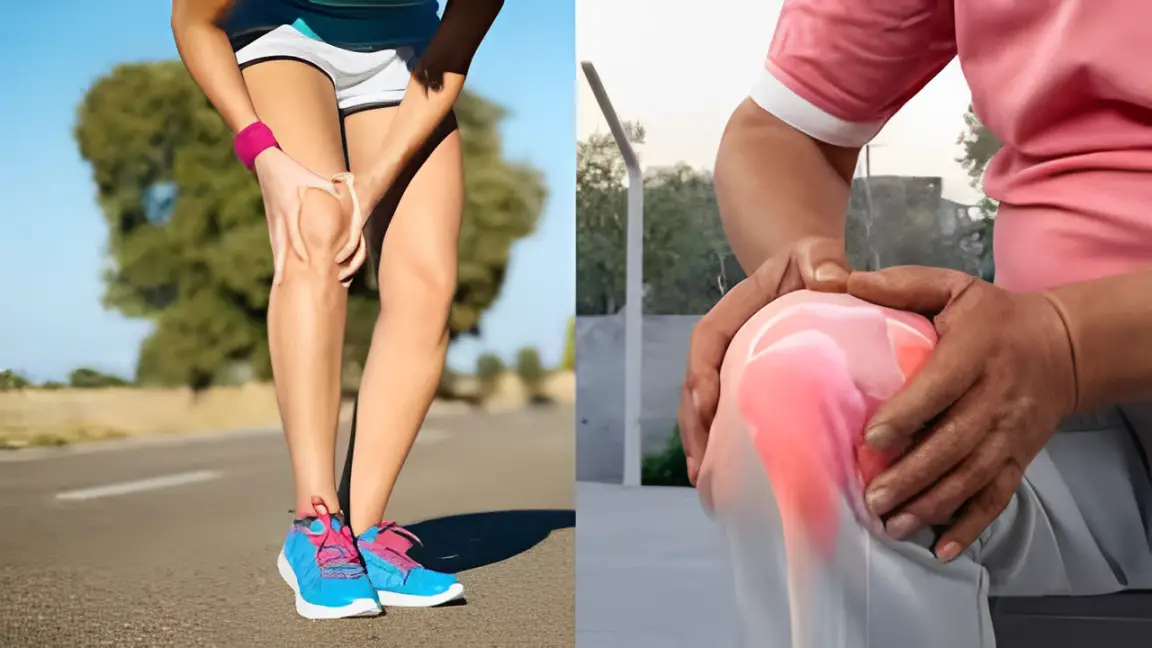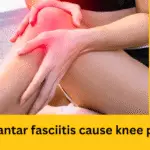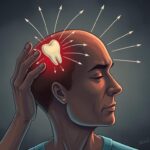Feeling intermittent knee pain can really get in the way of your day. It’s important to know why it happens and how to get rid of it. This will help you feel better and move more easily.

sharp stabbing pain in knee comes and goes
sharp stabbing pain in knee comes and goes
Knee pain that comes and goes is more common than you might think. It affects people from all walks of life. It’s key to tackle this issue to avoid it becoming a long-term problem.
By looking into why this happens and what can be done, you can start to feel better.
Key Takeaways
- Understanding the causes of intermittent knee pain is crucial for effective relief.
- Various factors can contribute to recurring knee discomfort.
- Exploring treatment options can help individuals find knee pain relief.
- Lifestyle changes can play a significant role in managing intermittent knee pain.
- Seeking professional advice is recommended for persistent knee issues.
Understanding Intermittent Knee Pain
Intermittent knee pain can be puzzling and frustrating. It affects your daily life and overall well-being. It’s characterized by sharp pain that comes and goes without warning. Knowing the reasons behind it is key to managing it effectively.s and factors that contribute to this condition is crucial for effective management and relief.

sharp knee pain causes
Common Causes of Knee Pain
Knee pain can stem from injuries, overuse, or certain medical conditions. Injuries like ligament sprains, meniscal tears, and fractures can cause sharp pain. Overuse or repetitive strain injuries are common in athletes or those with jobs that involve repetitive knee movements.
Medical conditions like osteoarthritis, rheumatoid arthritis, and bursitis can also cause knee pain. Osteoarthritis, for example, is a degenerative joint disease that wears away cartilage, leading to pain and stiffness. Understanding these causes is the first step to addressing the pain.
Why Pain Patterns Fluctuate
The pattern of knee pain can change due to several factors. Activity levels are a big factor; more activity can make pain worse, while rest can help. Weather changes also play a role, with some people feeling more pain in cold or damp weather.
“The relationship between weather changes and joint pain has been observed and reported by many patients, although the exact mechanisms are not fully understood.”
Also, the progression of underlying conditions can affect pain patterns. For example, in osteoarthritis, pain can get worse as the disease advances.
Risk Factors to Consider
Several risk factors can lead to intermittent knee pain. Age is a big factor, as older people are more likely to get conditions like osteoarthritis. Obesity also increases the risk, as extra weight puts more strain on the knee.
- Previous knee injuries or surgeries
- Family history of knee problems
- Participation in high-impact sports or activities
Knowing these risk factors helps people take steps to prevent pain and seek treatment when needed.
Sharp Stabbing Pain in Knee Comes and Goes: What It Means
Sharp stabbing pain in the knee needs attention to find the cause. Understanding this pain and its causes is key for managing knee pain. The knee is complex, and many factors can cause sharp pain.
Identifying Different Pain Sensations
Pain can feel different for everyone. Sharp stabbing pain is linked to certain knee conditions. It’s important to know the pain’s details to guess the cause. For example, pain when you’re active might mean a problem with the knee’s structure.s.

knee pain diagnosis
Medical Conditions Behind Intermittent Pain
Many medical conditions can cause knee pain that comes and goes. Knowing these conditions helps figure out the right treatment.
Meniscus Tears and Cartilage Issues
A meniscus tear is a common injury that causes sharp pain, especially when twisting or bending. Damage to cartilage can also cause pain and discomfort.
Arthritis and Inflammatory Conditions
Arthritis, like osteoarthritis and rheumatoid arthritis, can cause knee pain that changes in intensity. Inflammatory conditions can make pain worse at times and better at others.
Tendon and Ligament Problems
Problems with tendons and ligaments, like tendinitis or ligament sprains, can also cause sharp pain. These conditions often need specific treatments to ease pain and prevent more injury.
When to Seek Medical Help
If the pain is severe, lasts a long time, or comes with swelling or instability, see a doctor. A healthcare professional can diagnose and suggest the best stabbing knee pain treatment. Early treatment can prevent more damage and improve results.
Effective Relief Methods for Intermittent Knee Pain
Managing intermittent knee pain requires quick relief, long-term strategies, and lifestyle changes. Knowing these methods helps people take charge of their knee health.
Immediate Pain Management Techniques
When knee pain hits, quick relief is key. Applying ice or heat can help. Ice packs reduce inflammation, while heat therapy relaxes muscles around the knee.
- Resting the knee to avoid further strain
- Using compression bandages to provide support
- Elevating the knee above heart level to reduce swelling
Over-the-counter pain relievers, like ibuprofen or acetaminophen, can also help manage pain and inflammation.

Long-Term Treatment Options
For ongoing knee pain, you might need long-term treatments. Physical therapy can strengthen the knee muscles. This improves stability and reduces pain.
Physical therapy includes exercises tailored to your needs. These might include:
- Strengthening exercises for the quadriceps and hamstring muscles
- Flexibility and stretching exercises to improve range of motion
- Balance and coordination exercises to prevent falls
In some cases, you might need medical treatments like corticosteroid injections or surgery.
Lifestyle Modifications for Prevention
Changing your lifestyle can prevent knee pain. Keeping a healthy weight reduces knee strain. Regular, low-impact exercises strengthen muscles without wearing them down.
- Eating a balanced diet rich in anti-inflammatory foods
- Engaging in regular physical activity, such as cycling or swimming
- Avoiding activities that put repetitive strain on the knee
By making these changes, you can lower your risk of knee pain.
Conclusion
Sharp stabbing pain in the knee can be very limiting. It affects your daily life and overall well-being. Understanding the cause is key to managing it.
Identifying the cause of knee pain opens up treatment options. These range from immediate relief to long-term solutions and lifestyle changes. Always seek medical help to avoid complications and find relief from knee pain.
With the right approach, you can manage sharp knee pain. Addressing the cause and adopting preventive measures can improve your knee health. This way, you can regain your mobility and independence.
FAQ
What are the common causes of sharp knee pain that comes and goes?
Sharp knee pain can stem from several sources. These include meniscus tears, arthritis, tendon and ligament issues, and cartilage problems.
How can I manage sharp stabbing pain in my knee?
For sharp knee pain, try these immediate steps: apply ice, use compression bandages, and take pain relievers like ibuprofen or acetaminophen.
When should I seek medical help for intermittent knee pain?
See a doctor if your knee pain is severe, doesn’t go away, or comes with swelling, redness, or instability.
Can lifestyle modifications help prevent knee pain?
Yes, staying healthy, exercising regularly, and avoiding high-stress activities can prevent knee pain.
What are the long-term treatment options for knee pain?
Long-term treatments for knee pain include physical therapy, corticosteroid injections, or surgery, depending on the cause.
How can I identify if my knee pain is related to arthritis or inflammatory conditions?
If your knee pain is stiff, swollen, or red, it might be arthritis or an inflammatory condition. Consult a healthcare professional for a proper diagnosis and treatment.
Are there any specific exercises that can help alleviate knee pain?
Yes, exercises that strengthen the knee muscles, like quadriceps and hamstring exercises, can help reduce pain and improve stability.
Read More – what helps nerve pain after knee replacement











Leave a Comment